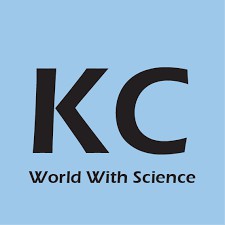Theme: Accelerating the trending Polymer Innovations for solving Societal Challenges
Euro Polymer Science 2019
About conference
Polymer Science 2019 heartily invites participants from everywhere the globe to attend 5th Edition of international conference on Polymer science and technology on July 30-31, 2019 at Amsterdam Netherlands, mainly centered on theme: “Accelerating the Trending Polymer Innovations for solving Societal Challenges”. Polymer Science 2019 aims at blooming up the new innovative concepts and new technologies amongst the professionals, industrialists and students from analytical areas of fabric science, compound science and technology.
On behalf of the Organizing and Program Committee we tend to take pleasure of gathering pioneers, eminent professors, researchers, scientists and students across the globe to share and exchange their experiences in each and every allied ideas as well as analytical areas of Polymer science, Chemistry and technology. It is an excellent platform to share your recent innovations and applications in the form of cooperative discussions and technical sessions.
Euro Polymer Science 2019, is an event where you can share and interchange theoretical information and technical applications in Polymer science. There'll be several seminars, workshops and technical sessions which will grab the interest of the professionals who will attend the conference.
Summary:
Polymer science is advancing on a daily basis the use and handling of Polymer Science has been one in every of the first main thrusts of improvement and success since the start of progress. The being linear molecular weights of lots of with massive molecules , thousands, and even millions is these days a recognized truth. For these days billions of bucks of technology and a military of, scientists engineers, technicians, and (more than sixty thousand within the U S. alone) work with materials which regularly share solely the common title, polymer. These employees and their predecessors have made varied variations of polymers, every with assets designed to satisfy bound benchmark. analysis within the field of chemical compound analysis is therefore active that quite sixty thousand. This description covers each traditional, standard Polymer Science and made composed polymer
Important and scope:
Polymer science field of fabric has helped in advancement in numerous fields of science and technology. the compound business has apace developed and is larger than the copper, steel, Al and a few different industries combined. each natural and artificial polymers square measure remarkably concerned in comfort and facilitation of human life and square measure liable for life itself, for medication, nutrition, communication, transportation, irrigation, container, clothing, recording history, buildings, highways, etc. In fact, it's difficult to imagine human society while not artificial and natural polymers. In our ever-increasing technological world, science plays a vital role in providing solutions to vital issues of air, clean, and rich water, food, energy, and health. the attention of polymers and connected texts give each the statistics and insights of their higher understanding in our life.
Why to attend:
Euro Polymer science-2019 that goes to be the leading conference dedicated to chemical compound science provides a foremost technical forum for sharing and learning regarding this analysis and advancements, in conjunction with conversing new applications and technologies. From everywhere the planet there'll be displays on main topics by skilled and leading operating teams and panels.
The main objective of the conference is to targeted on searching for regarding Polymer science and Technology, this is often the most effective probability to satisfy several nice professionals, scientists from throughout the planet. It Conduct shows, debates poster displays spreads the information and acknowledgment at this occasion .Broadly acclaimed speakers, the most recent strategies, strategies, and therefore the up up to now services in chemical compound science and technology square measure signs of this conference.
Traget Attendees:
Eminent Scientists of Polymer Science & Engineering
Polymer Professors
Research fellows
Students
Directors of Polymer companies
Chemical Engineers
Polymer Associations
Track 1: Nanomaterial and nanotechnology
In nanomaterial and nanotechnology the term ‘Nano’ is derived from the Greek ‘Nanos ‘which is known as extremely small particle. Basically nanomaterial is material with dimensions on the nano-scale.structure at Nano-scale has unique optical, electronic, or mechanical properties. Actually nanomaterial’s cover huge areas of materials of materials, many of which we would not normally consider to be particularly revolutionary. Because nature is full of nanomaterial’s and Nano-structure. Nanotechnology is the engineering of operative systems at the molecular scale. This covers both present work and concepts that are more advanced. In this real world today the nanotechnology has ability to bulid products using techniques and equipments to produce completly high performance products. The idea that seeded nanotechnology were first discussed in 1959 by renowned physicist Richard Feynman in his talk There's Plenty of Room at the Bottom in which it explained about the possibility of synthesis via direct manipulation of atoms
Track 2: Polymer Chemistry
Polymer chemistry is a chemistry branch which deals with structures and their properties.it is also known as macromolecular chemistry. Processing of macromolecule is called as polymer . Polymer chemistry conjointly deals with issues associated with medication, Biology, organic chemistry and Material Science; however, Polymer Chemists focus on synthetic organic polymers due to their commercial importance. It is all about analysing how the monomers merge to generate useful substances with the desired features by manipulating their molecular structure, the composition, and applying chemical and processing techniques that can impact the properties of the final product.
Track 3: Polymer Rheology:
The study of flow of matter is known as Rheology basically in a liquid state, but also responds for "soft solids" or solids like plastic flow rather than deforming elastically in response to applied force. It is a department of physics which deals with the deformation and flow of materials, both solids and liquids. Rheology generally accounts for the behavior of non-Newtonian fluids, by distinguish the minimum number of functions that are needed to relate stresses with rate of change of strain or strain rates. Rheometry is experimental characterization of a material's rheological behavior .In execution, rheology is principally concerned with prolong continuum mechanics to characterize flow of materials, that indicates a combination of elastic, viscous and plastic behavior by properly combining elasticity and (Newtonian) fluid mechanics. Rheology has many application in polymer science and engineering, pharmaceutics, biology and physiology.
Track 4: Biopolymers
“Polymeric biomolecules” or the Biopolymers are polymers fabricated by living organisms. Polynucleotides, Nucleotides and Polypeptides are the three main classes of polymers those are called long polymers.it also have short polymer of amino acids and polysaccharides which are frequently linear bonded polymeric carbohydrate structure for example examples: rubber, suberin, melanin and lignin.
Structure of the biopolymer has a well- defined. The difference between biopolymer and synthetic polymer can be found in their structure .compare to biopolymer synthetic polymer has much simplest structure. This fact shows to a molecular mass distribution that is missing in biopolymers. All biopolymers are alike That they all contain the similar sequences and numbers of monomers and thus all have the same mass.
Track 5: Commercial Application of Biopolymers
A large form of biopolymers, like polysaccharides, polyesters, and polyamides, square measure naturally synthesized by microorganisms. These biopolymers vary from viscous solutions to plastics and their physical properties that square measure addicted to the composition and relative molecular mass of the chemical compound. gene-splicing of microorganisms has provided a huge potential for the biotechnological production of biopolymers with desired properties appropriate for medical application like tissue engineering, material science, drug delivery and bioplastics. There square measure many advantages in commercializing biopolymers largely for property development, renewability and eco-friendly aspects. Bioplastics will be factory-made principally with 3 completely different ways, one is modifying present polymers like starch, cellulose. Second, is by polymerizing bio-based monomers that square measure created by fermentation and therefore the last one, as mentioned earlier, by genetically changed microbes and plants. There square measure many technologies and processes designed for biopolymer production that embrace extrusion, film processing, thermoforming, fermentation, injection moulding, etc.
Track 5: Synthetic polymers
In the early decade, chemists began to duplicate natural polymers, and build artificial polymers, starting with nylon that mimics silk in its strength and suppleness. This man-made polymers area unit those that include many continuance structural units called monomers. synthetic resin is one in every of the only and best better-known samples of polymers, it's ethylene or olefin because the chemical compound unit whereveras the linear compound is thought because the high density synthetic resin. several chemical compound materials have chain-like structures that area unit kind of like synthetic resin. the foremost common uses of polymers of in standard of living area unit in material and textile industries, non stick pans, PVC in pipes and PET bottles that area unit normally used. Tyres area unit factory-made from BUNA rubbers. Plastic could be a kind of artificial compound. Currently, over sixty thousand plastics square measure factory-made for industrial and business functions. Roughly seventy fifth of the plastics utilized in this country is classified mutually of six varieties, or “The massive Six”.Polyacrylamide could be a water swelling and high relative molecular mass compound made up of amide monomers. Poly (acrylamide-co-acrylic acid) and its atomic number 11 salts (APAM) area unit wide being employed as thickening agent, binder, soil conditioner, filtering properties, flocculating agent, suspending agent, lubrication, and oil recovery agent. one in every of its biggest uses is waste water treatment. artificial polymers are evolving with new rising technologies that have taken inspiration from different areas like biology, like self healing polymers that heal once injury is completed to that that area unit typically thought of irreversible, it's still in development and presents a challenge to provide it in massive scale. different advanced polymers embody, nanocomposites and plastic physics.
Track 6: Solid waste management techniques of polymers
Development and modernization has caused an enormous increase within the production of every kind of commodities, that indirectly generate waste. Plastics are one in every of the materials thanks to their wide selection of applications thanks to skillfulness and comparatively low price. they're unbelievably versatile materials; they're cheap, light-weight, strong, durable, and corrosion-resistant with high thermal and electrical insulation properties. the {range the variety} of polymers and therefore the skillfulness of their properties facilitate the assembly of an enormous range of plastic product that bring technological advances, energy savings and diverse alternative social edges By. analysis relating to the usage techniques of Plastic Solid Waste (PSW). These are categorized into, re-extrusion (primary), mechanical (secondary), chemical (tertiary) and energy recovery (quaternary) . every methodology provides a singular set of benefits that create it significantly beneï¬cial for speciï¬c locations or applications. Mechanical usage (i.e. secondary or material recycling) involves physical treatment, while chemical usage and treatment (i.e. tertiary encompassing feedstock recycling) produces feedstock chemicals for the industry Chemical usage, i.e., conversion of waste plastics into feedstock or fuel has been recognized as a perfect approach and will considerably scale back cyberspace value of disposal. the assembly of liquid hydrocarbons from plastic degradation would be helpful therein liquids are simply keep, handled and transported. However, these aims don't seem to be simple to realize . another strategy to chemical usage, that has attracted a lot of interest recently with the aim of changing waste plastics into basic petrochemicals to be used as organic compound feedstock or fuel for a spread of downstream processes. There are completely different strategies of getting fuel from waste plastic like thermal degradation ,catalytic cracking and chemical change. several different method together with shift and chemical action degradation are developed to De-polymerize waste plastics into liquid organic compound fuels. Thermal degradations don't seem to be solely used for compound however it's conjointly used for aromatics and gas .
Track 7: Polymer+3D Printing
From a synthetic bone fabricated from acrylic to custom confections created from chocolate, the globe of 3D printing keeps obtaining additional superb. Today, 3D printers will enable individuals to form just about something, employing a form of materials, from metal and ceramic to sugar and polystyrene. Of course, plastic is that the substance that 1st created 3D printing of any kind doable, and plastic remains one in every of the foremost common and versatile styles of materials employed in 3D printing.A commenter on a recent compound Solutions journal asked for data regarding the foremost common styles of plastics employed in 3D printing. Here’s a touch bit regarding the 3 most-frequently used plastics that have helped spur the superb evolution of 3D printing:
A terpolymer invented by polymerizing polyvinyl resin and vinyl cyanide with polybutadiene, ABS is another plastic unremarkably employed in 3D printing. Beginners particularly favor it for its simple use in its filament kind, and since it’s sturdy, strong, heat-resistant, efficient and versatile. , PLA is created from renewable, organic resources like corn starch or sugarcane. It’s unremarkably wont to create food packaging and perishable medical devices and implants. PLA is nice for 3D printing as a result of it’s straightforward to figure with, environmentally friendly, accessible in a very sort of colours, and may be used as either a organic compound or filament.
Of course, the vary of materials which will be employed in 3D printing continues to expand and evolve beside the method and its applications. Still, one in every of the foremost superb developments in producing traces its beginnings to the initial “space-age” material — plastic. which strikes America as terribly fitting!
Track 8 : Green Polymers
Go green, go natural! once it involves polymers, inexperienced and natural aren't identical. As their name implies, natural polymers (or biopolymers) square measure polymers that occur naturally or square measure created by living organisms (such as polysaccharide, silk, chitin, protein, DNA). By a wider definition, natural polymers is unreal out of raw materials that square measure found in nature.
In addition, the employment of renewable resources for inexperienced compound production mustn't contend with food production, mustn't promote intense farming or deforestation, and will not use transgenic plants or genetically changed bacteria; perishable polymers mustn't turn out inhalable spores or nanoparticles.
Although natural polymers still quantity to but I Chronicles of the three hundred million loads of plastics created per annum, their production is steady rising. In the U.S., demand for natural polymers has been foreseen to expand half-dozen.9 p.c annually and rise from $3.3 billion in 2012 to $4.6 billion in 2016. The market is driven by a growing demand for natural polymers with medical and pharmaceutical medical applications. Natural polymers are also utilized in construction and adhesives, food, the food packaging and food industries, and cosmetics and toiletries, similarly because the paint and inks industries. The market is LED by polysaccharide ethers and conjointly includes starch and fermentation polymers, exudates and vegetable gums, protein-based polymers, and marine polymers.
Track 9: Bio- Medicinal Polymers
Multiple biological, artificial and hybrid polymers are used for multiple medical applications. a good vary of various polymers is obtainable, and that they have additional the advantage to be tunable in physical, chemical and biological properties in an exceedingly big selection to match the wants of specific applications. This review provides a short summary concerning the introduction and developments of polymers in drugs normally, addressing initial stable polymers, then polymers with degradability as a primary biological perform, followed by varied alternative purposeful and responsive polymers. it's shown up that medicine polymers comprise not solely bulk materials, however additionally coatings and pharmaceutical nano-carriers for medicine. there's later on an outline of the foremost oft used compound categories. the most body of the review then is structured in step with the medical applications, wherever key needs of the applications and also the presently used compound solutions are indicated.
Track 11: Polymer Industry Market
Polymer demand in Europe the ecu compound market has long been recognized amongst the globe leaders. it's presently facing apparently restricting maturity within the West and therefore the question is currently, of a way to add price throughout the availability chain. Central Europe is seeing increasing investment in industrialized and plastic process, with several countries cashing in on free access to the only market not to mention an occasional production prices. Russia and therefore the former state Republics still have lots of unsuccessful potential, deteriorated by poor republics relations and political economy. The smaller states within the region square measure experiencing a fast growth of technological capability that offers nice opportunities, but at a similar time, threatens long established markets within the west. the ecu market is big and various and despite increasing economic process, opportunities square measure gift in today’s climate. while not prime quality information it's troublesome to arrange future investments and promoting ways. AMI’s latest report provides careful applied math analysis of wherever growth opportunities lie and therefore the nature of the trade. This report can assist any company wish to raised perceive the ecu industry
AMI's 2015 European industry Report, European compound markets square measure forecast to grow by one.3% this year, building on a recovery of but I Chronicles for 2014. However, even this modest gain is underneath risk from the region's tight provide for several materials and chop-chop economic process.As a result the ecu industry in 2015 finds itself in another amount of upheaval and alter because it appearance to tug out of the stagnation caused initial by the nice Recession in 2008-2009 then by the Eurozone crisis 2012-2013. within the 2 years since AMI printed its last review, in 2013, demand has barely shifted from simply over thirty six million tones and therefore the volume of polymers consumed in 2014 was still some 100 percent below that utilized in 2007 before the nice Recession hit
Track 12: Polymer Applications
Polymers might sound sort of a terribly business specific issue, and to a point they're, however they're truly a reasonably massive a part of a great deal of industries you'll so acknowledge. compound testing and practice for plastic has applications in such industries as part, automotive, physical science, packaging and medical devices. Polymers are implausibly numerous parts that represent such fields of engineering from aeronautics through medicine applications, drug delivery system, biosensor devices, tissue engineering, cosmetics etc. the applying of polymers and their resultant composites continues to be advancing and increasing quickly because of their ease concerning producing. once considering a compound application, you may need to grasp however the fabric behaves over time therefore you'll be able to assess its real price. it's necessary to grasp that chemical compound materials might include: raw materials, compound compounds, foams, structural adhesives and composites, fillers, fibres, films, membranes, emulsions, coatings, rubbers, protection materials, adhesive resins, solvents, inks and pigments. confine mind that these ar a number of the industries during which you'd see the employment and application of varied chemical compound materials and polymers themselves
Track 14: Nanopolymers and modern day application
Nanopolymers area unit presently being developed to seek out attention-grabbing applications in life sciences. These are have a broad vary of application it's a quick rising trend in chemical compound technology. Nanopolymers possessing kind of structures, shapes and purposeful forms have recently been synthesized victimisation many techniques. Nanopolymers area unit the foremost advantageous materials that area unit building blocks for mounting complicated and easy stratified nanosystems. Organizations and government entities area unit investment large amounts in nanotech R&D. natural science technology innovators across the world area unit delivering new merchandise and technologies. Nanotubes area unit being developed to decrease failures of dental implants that happens thanks to infection or dislodging from the encircling bone. By utilizing metallic element nanotubes loaded with anti-inflammatory drug and antibiotic agents it absolutely was discovered that bone cells grew a lot of smartly round the implants and also the implants had reduced probabilities rejection and infection. Nanopolymers like compound micelles may be used as coating materials for tissue engineering scaffolds. it's been discovered that such drug-loaded micellar shells will give controlled drug unleash and thus, foreseen and measured unleash may be achieved from nanoscaffolds for medication, genes or proteins adding blessings to preventing infection or stepping up tissue and organ regeneration. Nanopolymers also are applicable in automotive industries in manufacturing automobile elements like coatings created from water-repelling chemical compound nanocomposites or quartz nanoparticles, that permits it to stay clean and shield against scratches and chips and cut back corrosion with none amendment in look of the paint beneath. Similarly, there area unit varied applications for nanopolymers and engineering in a very wide spectrum of business sectors.
Track 15: Polymer Synthesis and Polymerization
Polymers are vast macromolecules composed of continuation structural units. The procedures of composition of macromolecules is chemical change. whereas chemical compound in standard usage suggests plastic, the term truly refers to an outsized category of natural and artificial materials. because of the extraordinary vary of properties accessible, polymers have return to play a vital and present role in way of life - from elastomers and plastics on the one side to natural biopolymers such as proteins and DNA on the other side. The study of chemical compound science begins with understanding the strategies during which these materials are synthesized. chemical compound synthesis may be a complicated procedure and might ensue in an exceedingly form of ways in which these materials are synthesized. Polymer synthesis is a complex method that can take place in a different of ways.
Related Societies:-
Swiss Chemical Society (SCS), Belgian Polymer Group (BPG) Portuguese Chemical Society, Chemical Industries Association, Swedish Chemical Society, Australian-European Polymer Symposium , Chromatographic Society of India, European Polymer Federation Congress, Czech Chemical Society, Hungarian Society for Separation Science, Federation of Asian Chemical Societies, Polymer Society of Korea , Royal Netherlands Chemical Society (KNCV).
Glance on market report:
The Polymer Science industries recreated the planet that we have a tendency to reside nowadays.in varied classes coming back from day to day commodities or technology. Polymers, resins, coatings, films and composites are major areas of the plastics market lined. From key market drivers we are able to forecast and trends the longer term of the plastic trade . In-depth company profiles and patent analysis can facilitate perceive the rising technologies and applications by key market players and stakeholders
The global chemical compound market (2016–2021) is calculable to succeed in USD 171.96 Billion by 2021 at a CAGR of eight.5%. The report covers the chemical compound foam market by organic compound sort, like ployurethan (PU), cinnamene (PS), PVC (PVC), phenolic, polyolefin, cyanuramide and others; by application, like packaging, building & construction, and others; and by region, namely, , Europe, Asia-Pacific, North America. Base year thought of for the study is 2015, whereas the forecast amount is between 2016 and 2021. the increase in demand for chemical compound foams in applications, such as automotive, building & construction, and packaging facilitates the expansion of the market. the ecu chemical compound industries makes the foremost important contribution to the welfare in Europe by sanctionative innovation, making quality of life to voters and facilitating resource potency and climate protection. nearly quite one.5 million individuals ar operating in sixty,000 corporations (mainly tiny and medium sized corporations within the changing sector) to make a turnover on top of 340 bn EUR each year. The industry includes chemical compound producers - depicted by Plastics Europe, converters - depicted by EuPC and machine makers - depicted by EUROMAP.
About 1.1 million tonnes primary plastics were made in European country in 2010, and with extra trade of polymers and semi-finished and final product, 1.3 million tonnes plastic product ar used for Austrian consumption. This consumption is distributed over 10 consumption sectors, of that packaging (24%), non-plastic product (20%), building and construction (18%), et al. (13%) ar the foremost necessary ones. when the employment part, around fifty three of the stuff is incinerated with energy recovery, one third of the plastics waste flow is recycled automatically, and roughly St Martin's Day is employed for feedstock usage. solely minor fractions of the waste flow ar landfilled or reused. These results highlight the foremost relevant streams, which may facilitate to focus time and resources on the most processes or sectors, particularly for waste management, to guide this and future waste flows to the foremost ecologically and economically optimum treatment
Estimated Global Polymer Market Growth Rate by 2020:
The Global High Performance Polymers Market is poised to grow at a CAGR of around half dozen.5% within the next three years to succeed in roughly $8.8 billion by 2020. The study focuses on market trends, leading players, offer chain trends, technological innovations, key developments, and future methods. The report provides comprehensive marketing research across four major geographies like North America, Europe, Asia Pacific and different components of the planet
Thank you........
For attending Polymer Science 2018!!
Another Polymer Science and Technology has been successfully completed - The 4th Edition – and we must Thank the attendees, Panorama Hotel & Conference Centre Staff, and the Organizing Committee, Ad-Sponsors & Media partners and everyone else that helped to make this 4th Edition of International Conference on Polymer Science and Engineering with the theme: Delve into the Recent Findings and Advents in the Field of Polymer Science a successful conference.
To Attendees,
We hope that you obtained the kind of advance technical information in the arena of Material Science and Engineering that you were seeking, and that your role in the field has been enhanced via your participation. We hope that you were able to take part in all the sessions and take advantage of the tremendous advancements in Polymer Science and Technology that scientists are working with.
If you have any feedback for us for future consideration or enhancements of this Conference, please provide your feedback to Conference Manager.
Catharine Axton at : europolymer@materialsconference.org
The meeting covered various sessions, in which the discussions included the scientific tracks:
Polymer Science and Technology
Polymer chemistry
Polymer Physics
Biopolymers
Polymer Rheology
Nanomaterials and Nanotechnology
Polymer Engineering
Ceramics and Composite Materials
Radiation-Related Polymer
Applications of Polymer Science
Recent inovations in Polymer Science and Technologies
Polymers and the Environment
Polymer Science – The Next Generation
Polymer Industry Market
Bookmark your dates: We hope to see you at Euro Polymer Science 2019, Amsterdam Netherlands July 30-31,2019
Organizing Committee
Polymer Science 2019
Conference Highlights
- Nanomaterial and Nanotechnology
- Polymer Chemistry
- Polymer Rheology
- Biopolymers
- Commercial Application of Biopolymers
- Polymer+3D Printing
- Synthetic polymers
- Renewable resources and bio based polymers
- Bio- Medicinal Polymers
- Polymer Synthesis and Polymerization
- Nanopolymers and modern day application
- Polymer Industry Market
- Solid waste management techniques of polymers
- Polymer Applications
- Green Polymers
To share your views and research, please click here to register for the Conference.
To Collaborate Scientific Professionals around the World
| Conference Date | July 30-31, 2019 | ||
| Sponsors & Exhibitors |
|
||
| Speaker Opportunity Closed | Day 1 | ||
| Poster Opportunity Closed | Click Here to View | ||
Useful Links
Special Issues
All accepted abstracts will be published in respective Our International Journals.
- Journal of polymer science
- Journal of Polymer Science & Applications
- Journal of Research & Reviews in Polymer
Abstracts will be provided with Digital Object Identifier by











